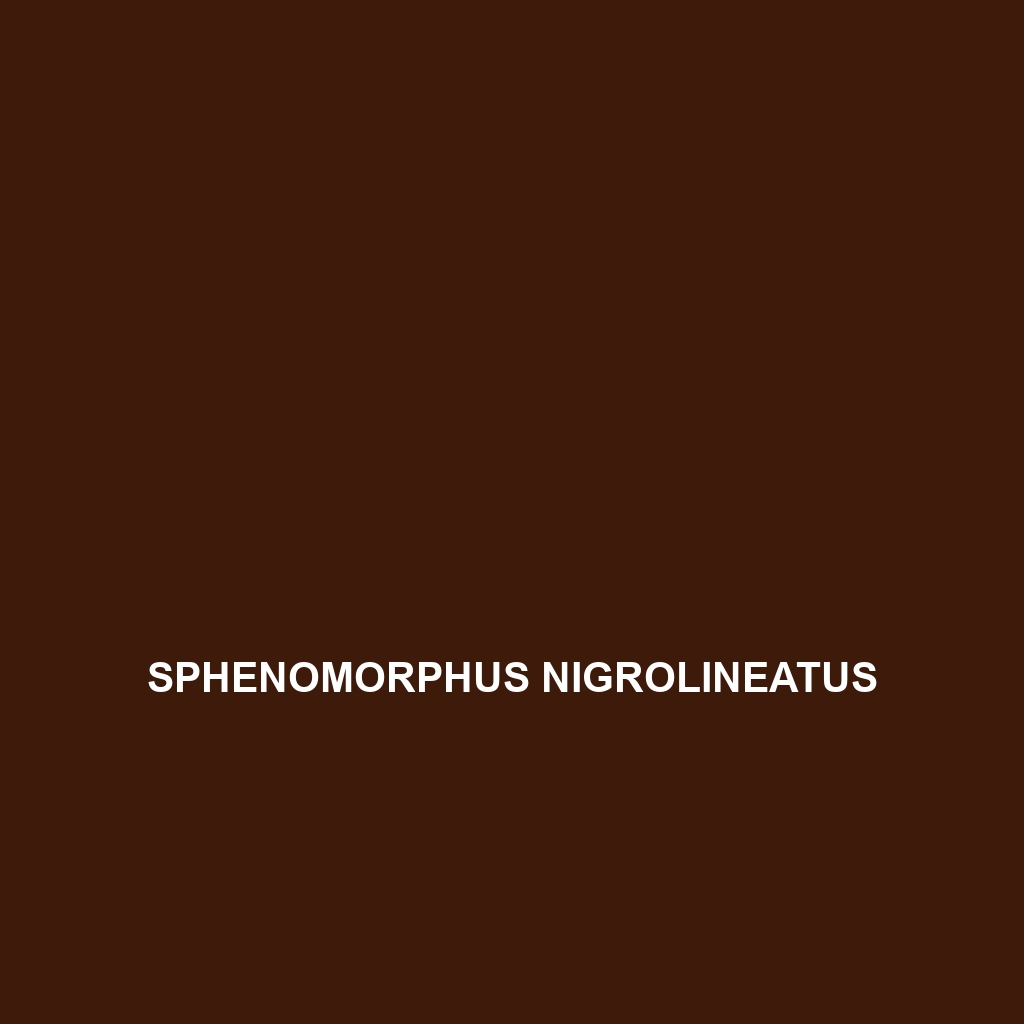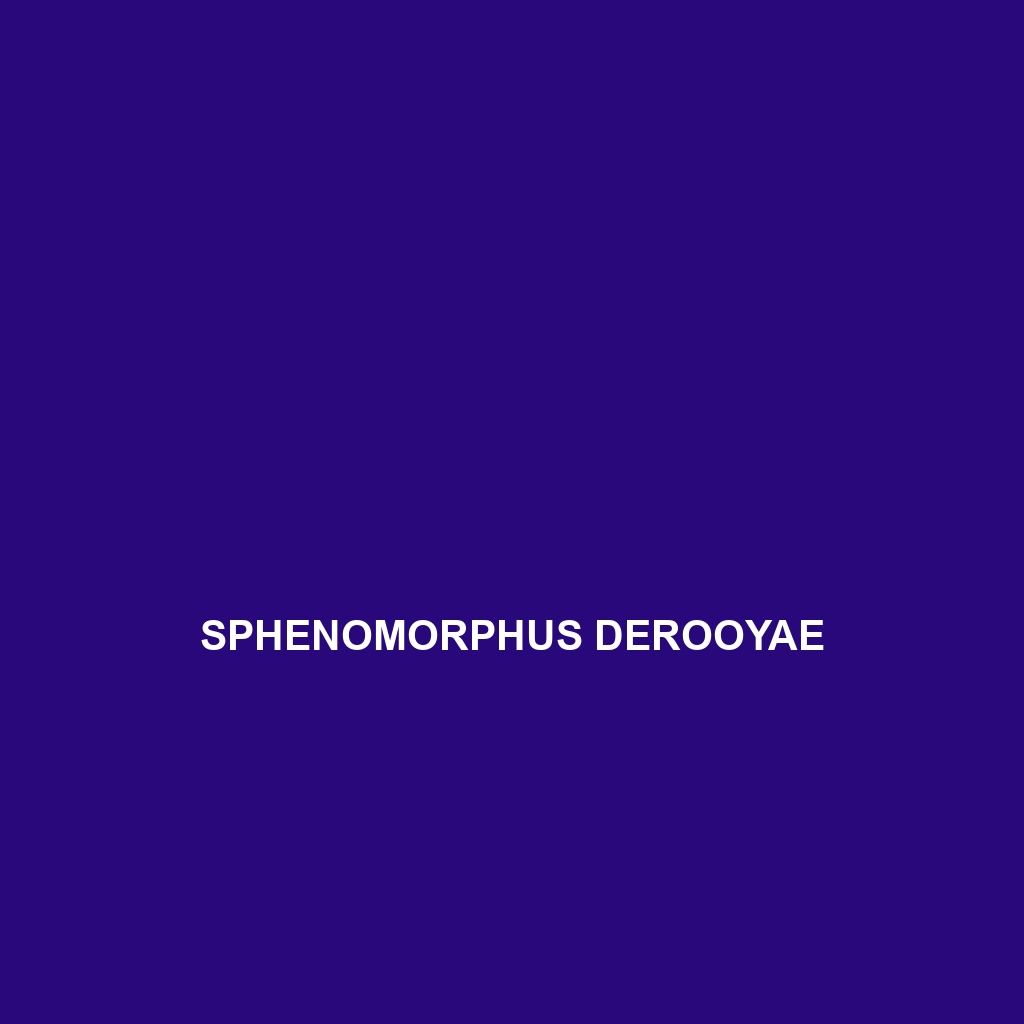<b>Sphenomorphus sarasinorum</b> is a vibrant, insectivorous lizard native to the humid tropical rainforests of Southeast Asia, particularly in Indonesia and Malaysia. With its distinct coloration, elongated body, and nocturnal behavior, this species plays a vital role in maintaining ecological balance by preying on various invertebrates while also serving as prey for larger predators.
Tag: lizard camouflage
Sphenomorphus praesignis
<p><b>Sphenomorphus praesignis</b>, commonly known as the ornate flat lizard, is an elongated and flattened lizard found in tropical rainforests of Southeast Asia, characterized by its olive green and brown coloration for effective camouflage. This insectivorous species exhibits fascinating behaviors such as basking and territorial displays, playing a critical role in maintaining ecological balance by controlling insect populations.</p>
Sphenomorphus nigrolineatus
<p>Discover the <b>Black-lined Skink (Sphenomorphus nigrolineatus)</b>, a striking Southeast Asian reptile known for its dark body and vibrant longitudinal stripes. This diurnal insectivore thrives in tropical rainforests, contributing to ecological balance by controlling insect populations while showcasing fascinating behaviors and impressive tail regeneration.</p>
Sphenomorphus muelleri
<p><b>Sphenomorphus muelleri</b>, or Mueller's Sphenomorphus, is a slender, nocturnal lizard from Southeast Asia, thriving in tropical rainforests with its distinctive earthy coloration and superior camouflage. This insectivorous species plays a crucial role in its ecosystem by regulating insect populations and enriching soil nutrients.</p>
Sphenomorphus minutus
<b>Sphenomorphus minutus</b>, commonly known as the minute skink, is a small insectivorous lizard measuring 10-15 cm, found in tropical and subtropical rainforests of Southeast Asia. This diurnal species exhibits a streamlined body, regenerates its tail, and plays a crucial role in its ecosystem by regulating insect populations and contributing to soil health.
Sphenomorphus derooyae
<p><b>Sphenomorphus derooyae</b>, a small, nocturnal lizard native to Southeast Asia's tropical rainforests, thrives in humid environments and displays striking color patterns for camouflage. This insectivorous species plays a vital role in regulating insect populations and maintaining the health of its ecosystem.</p>
Sphenomorphus dekkerae
<b>Sphenomorphus dekkerae</b> is a striking, slender lizard native to the tropical rainforests of Southeast Asia, characterized by its deep green or brown coloration with intricate patterns. This nocturnal insectivore plays a vital role in its ecosystem, controlling insect populations and contributing to soil health while facing vulnerabilities due to habitat loss.
Sphenomorphus capitolythos
<p><b>Sphenomorphus capitolythos</b> is a vibrant, insectivorous lizard native to wet tropical rainforests, where it thrives on a diet of insects and exhibits unique behaviors like diurnal foraging and courtship displays. This species, reaching lengths of 10 to 15 cm, is classified as vulnerable due to habitat loss, making conservation efforts essential for its survival.</p>
Sphenomorphus buenloicus
Discover the Sphenomorphus buenloicus, a stunning lizard native to the tropical rainforests and moist savannas of Southeast Asia, exhibiting a striking blend of glossy green or brown coloration. This agile, insectivorous species thrives in warm, humid environments, playing a crucial role in its ecosystem by helping to control insect populations.
Sphaerodactylus storeyae
<strong>Sphaerodactylus storeyae</strong> is a small, nocturnal lizard native to the tropical rainforests of the Greater Antilles, measuring 2 to 3 inches in length, with a patterned body that aids in camouflage. This insectivorous species plays a crucial role in its ecosystem by controlling insect populations and serving as prey for larger animals, all while exhibiting unique adaptations such as specialized toe pads for climbing and the ability to lose its tail to escape predators.









